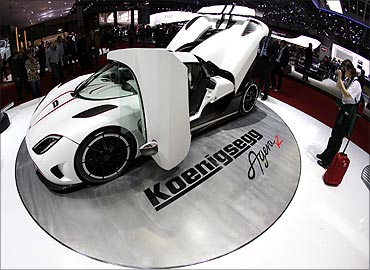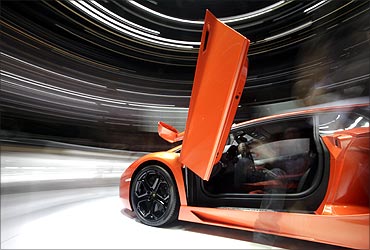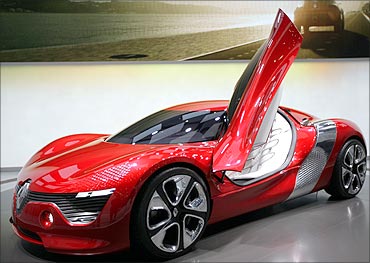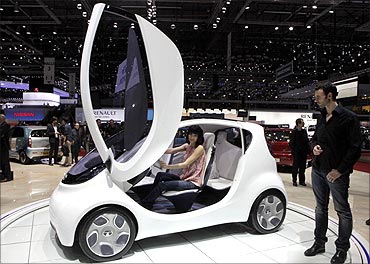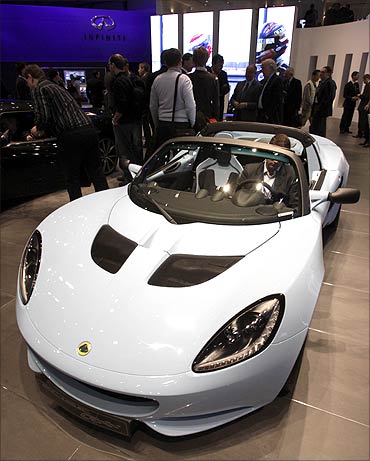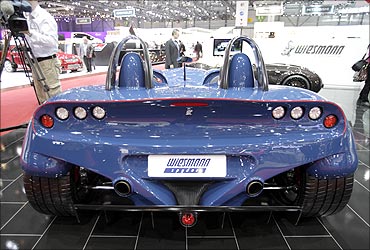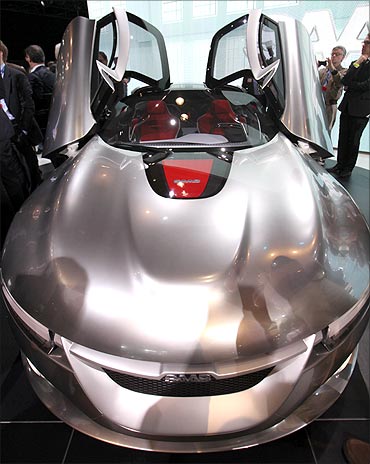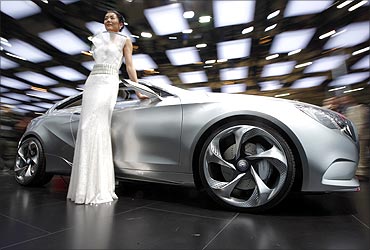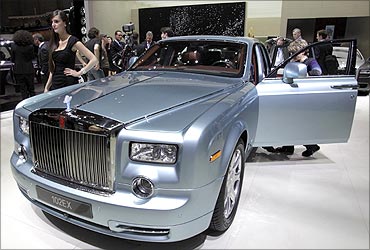Orange UK and Barclaycard today announced their much-anticipated commercial launch of NFC, a mobile-payment service called “Quick Tap.”The service, announced earlier than expected, is only available with one NFC phone so far, the 2G Samsung S5230, known as the Tocco Lite in the United Kingdom. And the phone is currently only available in only 42 Orange UK shops. But it qualifies as one of the first NFC rollouts worldwide.
Consumers will be able to tap their phone to pay for purchases up to £15 (US$24.35) at more than 50,000 stores in the United Kingdom, including McDonalds, Pret A Manger, EAT and Subway.
Barclaycard’s payment application, supporting MasterCard PayPass, is stored on SIM cards issued by Orange. A Quick Tap app will sit on the home screen of the phones offering a menu for users and will let them see prior purchases.
Orange is part of a joint venture with T-Mobile UK, Everything Everywhere, and Barclaycard is the credit card issuing and acquiring arm of Barclays bank.
Update: The payment application on the phone is similar to a prepaid account. Consumers will use their Barclaycard credit, Barclays debit or Orange credit card account to transfer up to £100 into the payment application before they can tap to pay. The value is stored on the network and the account can hold up to £150.
“There's a number of reasons why we did that,” Tom Gregory, head of digital payments for Barclaycard, explained to
NFC Times. “We did lot of research with consumers and did some focus groups. This resonated very strongly with them. They wanted to be in control of their money.”
Consumers will be able to top-up the payment accounts on their phones or their computers. For phone top-ups, they'll enter PIN codes on their handset keypads.
But purchases of more than £15 are not permitted with the phones, even by entering a PIN. Barclaycard had
trialed higher-value purchases on NFC phones with employees in early 2009, allowing users to enter PINs on the handset keypad. Gregory said enabling consumers to do high-value payment on their NFC phones is on the roadmap, but standards oragnizations and the international payment card networks have yet to agree on a uniform approach.
“Industry standards for high-value transactions are being approved by EMVCo, by Visa and MasterCard, but they are not in wide circulation,” he said. “It’s something we’re pushing hard to accelerate. We want the consumer to be able to use that phone anywhere.”
To encourage consumers to use the service, Barclaycard is offering Orange customers £10 cash added to their accounts upon activation. They can receive 10% cash back on all purchases made with the phone in the first three months.
Single Application So Far
The NFC service launched by Orange and Barclaycard offers only payment for now. There are no other applications available for users, including those that would use the other communication modes of NFC technology–tag reading and peer-to-peer data transfer. For example, with tag reading, users could tap their phones on NFC tags embedded in smart posters to download coupons or information. Bank payment uses NFC's card-emulation mode.
Representatives of Orange UK, or Everything Everywhere,
have said in the past that when the telco rolls out NFC, the mobile wallet would offer much more than just NFC payment at the retail point of sale. The phone would instead become a “lifestyle device.”
The additional applications could mean not only enabling subscribers to tap their NFC phones to pay for morning coffee, but to ride the London Underground to work, exchange digital business cards in meetings, redeem loyalty points to buy lunch, buy concert tickets over the network and later tap to enter the venue, and download movie trailers or music videos by tapping smart posters, said the telco. Orange UK was not immediately available for an interview today.
Putting London’s popular transit application, Oyster, onto the phones is not yet an option since the application is too slow when loaded onto a SIM. But transit authority Transport for London plans to accept PayPass and other open-loop contactless payment on its buses in time for next year’s Summer Olympics.
“We’ve launched with payments today; there are other applications and services (to launch) in the near future,” said Barclaycard's Gregory. “Payment is potentially one of the most difficult things to get right, and we’re pleased we’ve managed to achieve that.”
End update.
Lite on HandsetsOrange and Barclaycard had promised an early summer launch for the NFC service, which follows on from their partnership formed in 2009. But there are still no NFC-enabled smartphones on the market that support the standard single-wire protocol connection, or SWP, between the NFC chip and SIM. The SWP would be needed to run the PayPass application on the Orange SIM cards, which are provided by France-based Gemalto. The vendor also serves as trusted service manager for Barclaycard to download and manage the PayPass application.
Orange UK, like most other mobile operators in Europe, is requiring SWP-enabled handsets for its NFC launches because the SIM is key to its revenue model for NFC.
But the NFC version of the Samsung S5230 did not make a splash when Orange UK’s sister operator, Orange France, and other French telcos introduced it for their precommercial NFC launch in Nice a year ago.
The French operators together sold about 3,000 of the phones, known as the Player One in France, and subscribers have activated only about 20% of those for NFC, confirmed French operators and service providers. But they contend the activation rate is not disappointing, since for most of the year, the main NFC service available was transit ticketing and only about 40% of people in Nice regularly use public transit.
Orange UK is promising “more handsets from a selection of leading manufacturers,” though it’s unclear when NFC versions of such top-tier smartphones as the Android-based Galaxy S II from Samsung will be available in the UK market. Android NFC phones are expected from HTC and LG Electronics, but later in the year.
Google’s Nexus S Android NFC phone apparently only supports secure applications on embedded chips in the handsets. And recently announced NFC-enabled models from BlackBerry, the Bold 9900 and 9930, are not due until late summer and may not support the SWP at first, just secure applications on embedded chips.
Samsung’s Wave 578, supporting Samsung’s own bada smartphone operating system, will support the SWP, and France Telecom-Orange operators in France, Spain and Poland expected to use it. It will not be ready until at least the middle of this year. It’s not clear whether Orange UK wants the phone. An announcement at the Mobile World Congress in February by parent France Telecom of the Wave 578 and its use for NFC did not mention the United Kingdom.
Stela Bokun, UK-based senior analyst for Pyramid Research, told
NFC Times she thinks Orange UK was eager to launch the mobile-payment service, and the low-cost Samsung Tocco Lite is affordable for younger, early adopters.
Orange is also sending a message to handset makers that it wants phones that support the single-wire protocol, she believes.
“This might give Orange an advantage and have some (phone) vendors reconsider whether they want to build the secure element into the phone, or they want to form partnerships with operators and promote the SIM-based mobile payments model.”
Orange UK, is part of the joint venture with T-Mobile UK, Everything Everywhere, but only Orange is participating in the launch.







 22:25
22:25
 Amna
Amna




 These days you are nobody until you have the
These days you are nobody until you have the
 come yesterday’s news in a few hours time.
come yesterday’s news in a few hours time.







